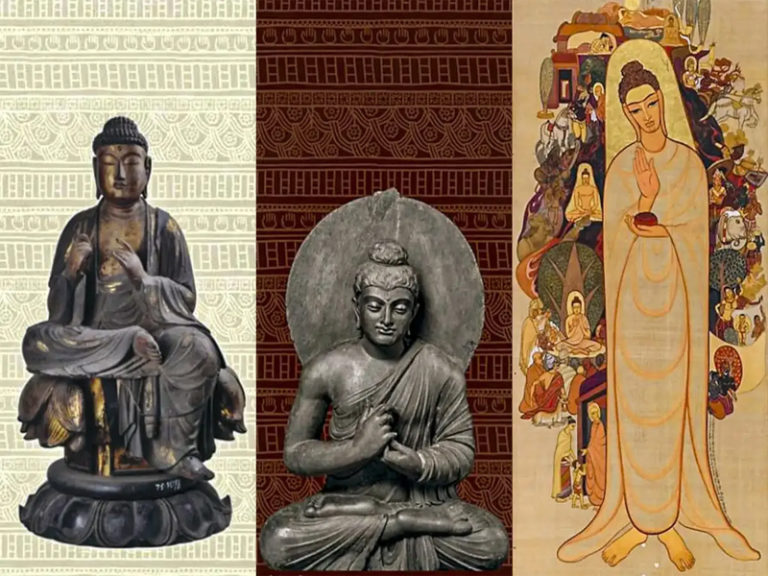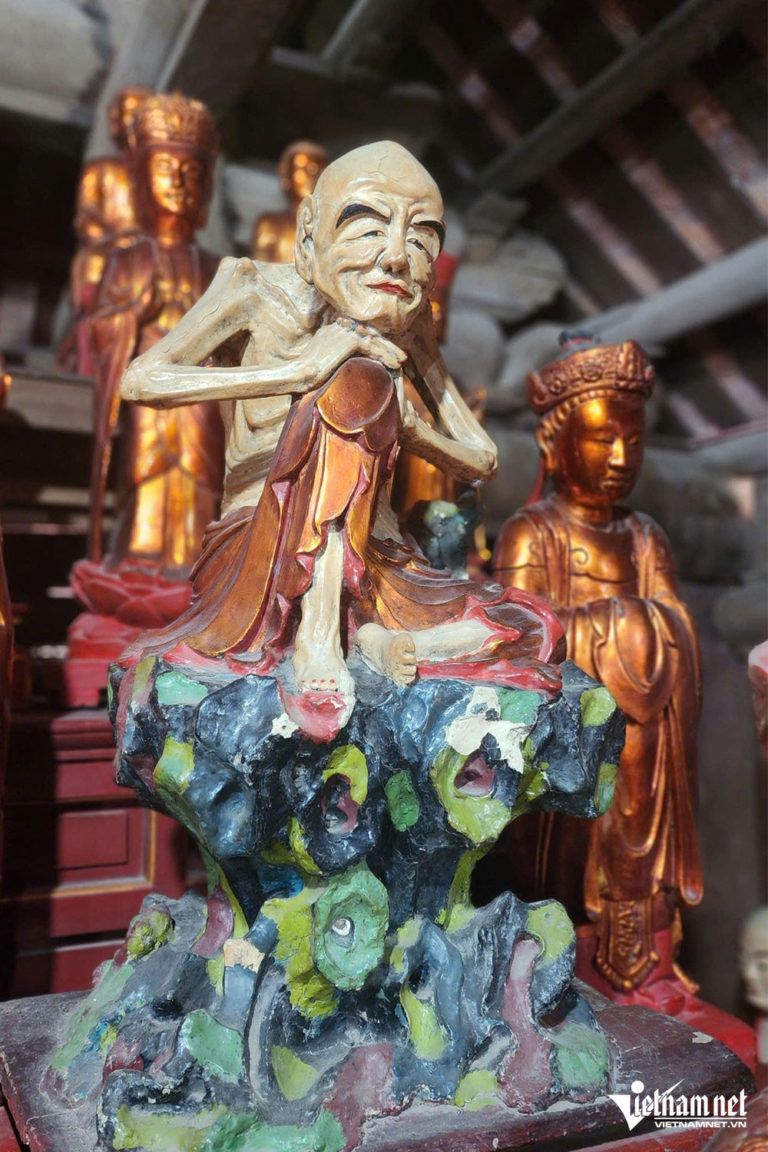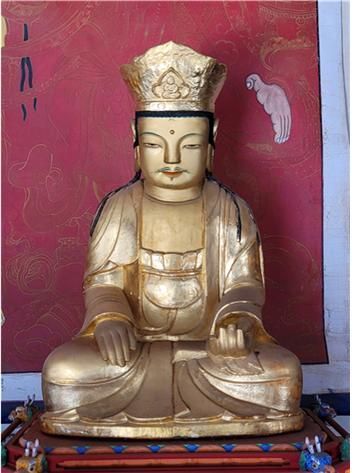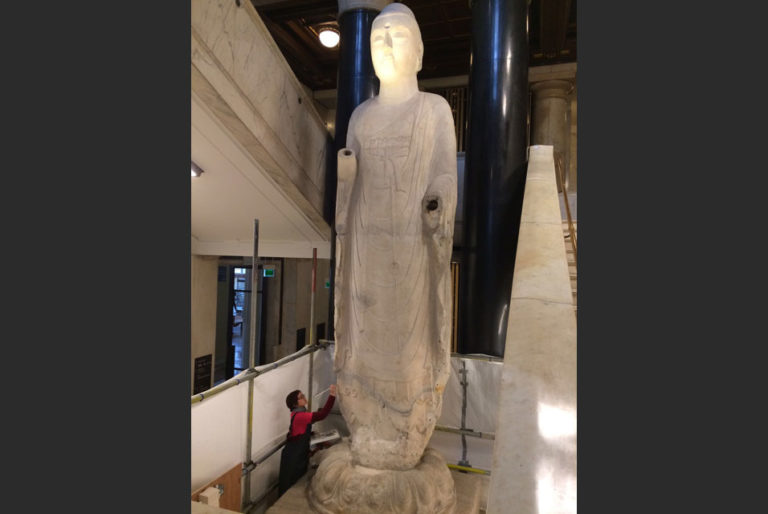Chen Huili’s decades of dedication to cultural heritage have transformed her from a former textile technician into one of China’s leading figures in rock art conservation. Guided by a unique four-step diagnostic method—rooted in traditional Chinese medicine and enhanced by modern technologies like CT scans and 3D mapping—Chen treats relics like patients, using sight, smell, inquiry, and touch to assess their condition. This “East-meets-West” approach achieves over 95% accuracy in preserving fragile art in humid environments.
Now director of the Dazu Rock Carvings Academy’s Protection Engineering Center, Chen’s journey began in the 1990s as a museum docent. Her expertise in industrial chemistry led her to pioneer restoration techniques and promote China’s grotto heritage abroad. After two visits to Italy nearly a decade apart, she went from being seen as a student to being respected as an equal—symbolizing both her personal evolution and China’s growing stature in global heritage preservation.
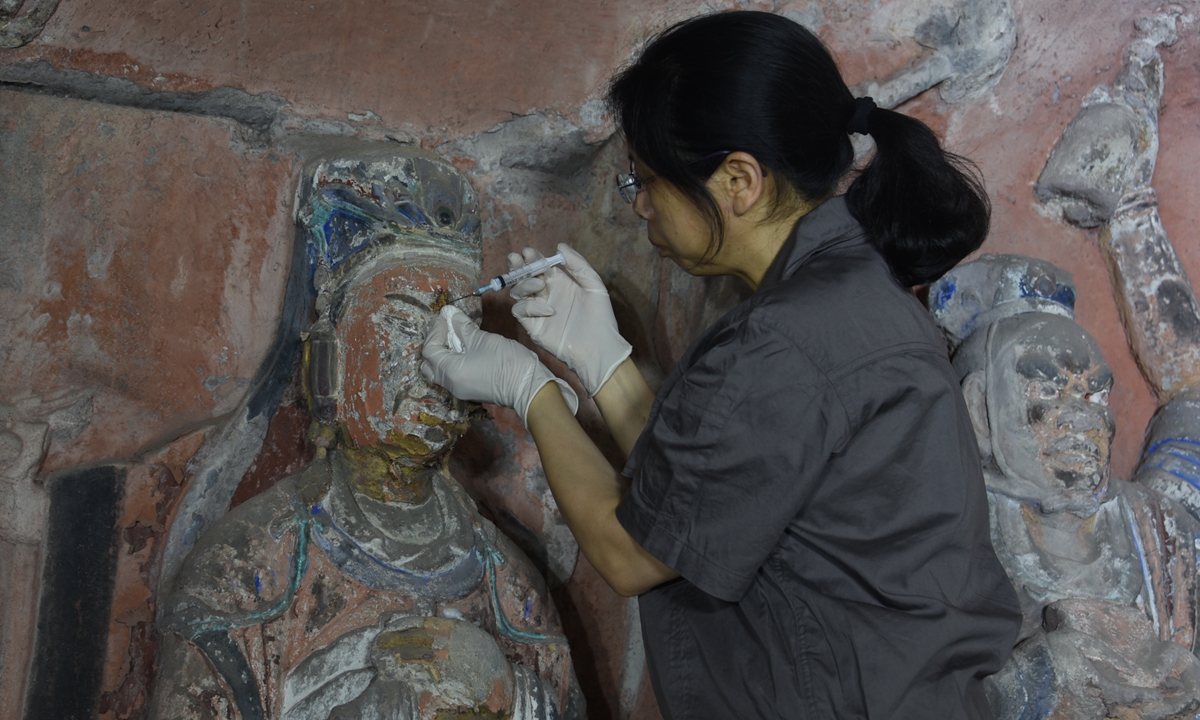
Amid a heatwave-induced drop in water levels at Chongqing’s Yutan Reservoir, 27 remarkably preserved cliff carvings from the Song Dynasty were uncovered — a find hailed as a major extension to the nearby UNESCO-recognized Dazu Rock Carvings. Among them, a statue of the Water-Moon Avalokiteshvara and a niche carving of Haritri, symbolizing maternal care, reinforce the site’s hallmark of depicting everyday life with spiritual nuance.
Chen Huili, who has dedicated over 30 years to conserving Dazu’s legacy, discovered these pieces shortly before her retirement. Passionate and meticulous, she has traversed all 75 cave temple sites housing over 50,000 sculptures. Her deepest connection is to the Guanyin with a Thousand Hands, China’s largest of its kind, which took her and her team eight years to restore through innovative methods — including reverse-engineering and creating detachable components.
The project, completed in 2015 after more than 3,000 days of work, marked a turning point in China’s approach to restoring immovable cultural heritage. For Chen, these newly revealed carvings are both a professional triumph and a personal farewell, deepening the cultural heartbeat she has felt throughout her career.
Chen Huili reinforces a stone statue of the Dazu Rock Carvings in Chongqing in 2018. Photo: Courtesy of Chen Huili
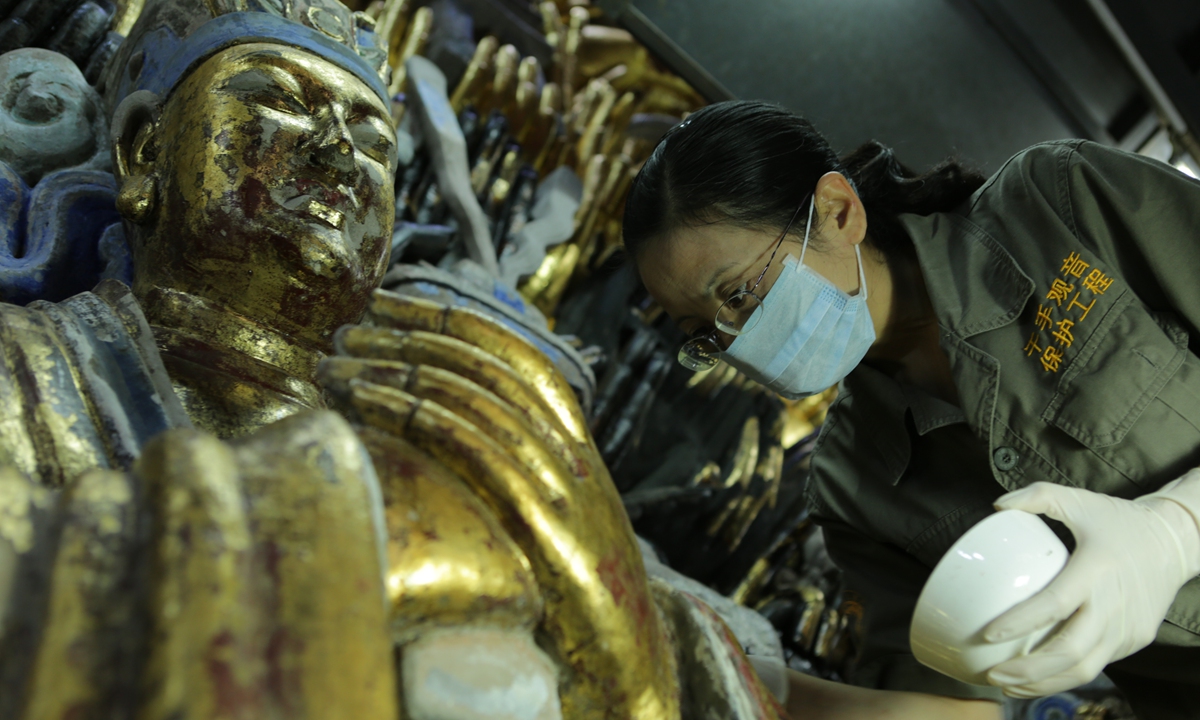
Chen Huili repairs the statue of Qianshou Guanyin in 2014. Photo: Courtesy of Chen Huili Flaming passion
Chen Huili’s decades of dedication to cultural heritage have transformed her from a former textile technician into one of China’s leading figures in rock art conservation. Guided by a unique four-step diagnostic method—rooted in traditional Chinese medicine and enhanced by modern technologies like CT scans and 3D mapping—Chen treats relics like patients, using sight, smell, inquiry, and touch to assess their condition. This “East-meets-West” approach achieves over 95% accuracy in preserving fragile art in humid environments.
Now director of the Dazu Rock Carvings Academy’s Protection Engineering Center, Chen’s journey began in the 1990s as a museum docent. Her expertise in industrial chemistry led her to pioneer restoration techniques and promote China’s grotto heritage abroad. After two visits to Italy nearly a decade apart, she went from being seen as a student to being respected as an equal—symbolizing both her personal evolution and China’s growing stature in global heritage preservation.

